Ian Kurth 2017 IMMT Race Report
Training indoors racing outdoors
Training lead up
Overall, I effectively doubled down on last year’s experiment of leveraging indoor swimming, cycling and running in
various ways to achieve a training effect within my personal and professional time constraints. This means spending plenty of time in the pain cave training while watching Netflix and listening to the Jocko Podcast. In addition to eliciting an extremely efficient and effective training dose, I can double dip my time and keep up with my various media outlet outlets.
Swim
Last season I decided to do all of my training on the Vasa erg in my “swim without getting wet” experiment. I continued this approach this season with goals of increasing volume and sustainable cadence while on the machine. I did less intense intervals in favor of more volume and longer, steady sets. A derivative of this approach came in the form of the famed “Red Mist” workout being modified for the Vasa. In a nutshell, the Red Mist workout is a 10x400m workout increasing in effort/pace over the course of the session. I created an adapted workout for the Vasa, and used this scheme for frequent sessions of 1-4k “swims”. I aimed to hit 10-12k per week for the final 8 weeks of the build. Over the course of the season, this again yielded positive benefits.
My infrequent race swims were faster than prior year’s races, and more importantly, I came out of the water without fatigue. Unfortunately, during the IMMT swim, I was battling some calf cramping which slowed my pace, but otherwise, I am remain extremely satisfied with the Vasa as a time efficient substitute for pool swimming at this phase of my life.
Bike
My approach to cycling this year again involved riding about 90% indoors. My reasons are primarily for convenience, effectiveness, efficiency, and safety. With the exception of participating in the Blue Ridge Camp in Boone, NC, commuting to work, and obviously races, I was riding indoors. This included about seven 5-hour, indoor, long ride sweat fests, and numerous 3-hour rides.
I again heavily leveraged the Zwift platform. This season our Endurance Nation team developed a weekly ABP ride on Sunday mornings which was well attended and very effective. Through the magic of technology, we could ride “together” on Zwift including conversing over a gaming chat platform. These rides served as a springboard to many of my century rides. In addition to these weekly long rides, many of us participated in early morning weekday Zwift races. These proved to be very motivational, competitive, and ultimately effective in driving gains.
Run
I continued my fairly extreme run frequency and durability experiment. I began this experiment last season with 42 straight weeks of running, including 4 months of greater than 200 miles. I continued this approach this season, again running EVERY day from the week after IMWI in September to the last taper week in August prior to IMMT totaling 47 straight weeks of running more than 40 miles per week. The vast majority of these miles were on the treadmill,and with the exception of races, were generally at Z1-2 pace. The idea for this extreme approach to frequency and durability stemmed from a thread on slowtwitch that I modified for myself, keeping the intent of the challenge in mind.
Lead up
The whole crew set out for the 2-day drive “Minivan style” from Wausau, WI to Mont-Tremblant, Quebec. We had a terrific, relatively uneventful road trip, thanks in no small part to intensive, immersive training in the use of headphones, ipads and the backseat babysitter (DVD player). As this is an apolitical report, I will summarize the current climate in a very timely and relevant billboard we encountered on our journey to visit our northern friends: Mont-Tremblant is a terrific venue for families.
Lots of things to do, and the crew was intent on knocking off our required activities to include: ziplining, luging, obstacle course, cartwheels on varied urban terrain, watching the solar eclipse, shopping, eating, and posing.
Access Our Insider Triathlete Email Series
Race Day
Got up early, with the usual pre-race preparations. Our hotel was a convenient 5-minute walk from transition. I got everything set in record time. It was a little bit of a hike to the swim start, where we briefly met for a team picture, got the wetsuit on, gave a kiss to Jen, and put the game face on.
Swim
This was my first self-seed swim start. I have to say that I am a fan, as my usual IM swim experience involves being pummeled in a 1-hour moving bar fight. This swim involved very little contact, and I swam without obstruction basically along the buoy line. My swim fitness was great and my swim mechanics were rusty, but adequate. Unfortunately, I had to manage some calf cramps throughout the second half of the swim. Pretty typical swim otherwise, aside from it feeling long. The swim is just a commute to the bike. Exiting the water, I didn’t dwell on the swim, and just kept moving. Process oriented.
T1
This is where I start the day-long process of moving through the field. KISS concept. Goal: “best in class”. I decided to skip the wetsuit strippers in favor of removing it while running the long transition from swim exit to the tents. I grabbed my bag, removed my shoes and helmet , found a volunteer to replace my wetsuit in the bag, and took off. I put on my helmet while jogging to my bike (great position). Shoes on, and go.
Bike
One of the downsides of not riding outside is that the “metrics” from indoor riding don’t translate exactly to racing conditions. I observed this pretty early in the bike when my power numbers and heart rate didn’t match to what I would expect, based on how hard I was riding. My race plan involved racing to a power range I had proven I could hold during many long rides. The plan also involved “cross checking” these to HR caps I similarly established.
Initially, my power seemed low, and my HR seemed high. I “worked” to lower my HR as quickly as possible, but it seemed to always be at the upper end of my cap limits. Keeping an eye on this pattern, I ate and drank plenty taking in about 2,000 calories, and ample water and sodium, peeing about 5 times total. I was definitely moving through the field, despite very low power. About ⅔ of the way through the bike, I decided to roll the dice a bit and press the bike on the out-and-back portion of the highway. While my power rose only to my IM target, my HR bumped into the low 140’s (a range typical for a HIM). I continued to move steadily through the field knowing that I wouldn’t know how this 1.5 hour effort would play out until late in the run.
Over T1 and the bike, I passed over 800 people moving from 930th to 130th place OA… Lots of wind shadows…
Despite this ramping of effort, I fell short of my goal watts. A .65 IF is pretty conservative, and I suspect is a product of an artificially low power reading vs. an FTP set in an upright position (not in aero). My time indicates that I was definitely slippery as a benefit of aero tweaks, and disciplined in keeping my head down while riding. I cut about 20 minutes off my bike from 2 years ago here.
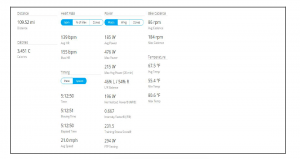

T2
No major issues. Quick and efficient. Goal: “Best in class”. I ran into T2, grabbed my bag and dumped it. Socks on, shoes on, grabbed my Ziploc go bag and headed out. I accomplished my objective with the 2nd fastest T2 in my AG.
Run
I again wanted to have a crack at a 3:30 marathon. During training leading up to the race, I thought I had the fitness to capture this goal. However, obeying my HR over the early miles and the hills on the outbound required me to quickly readjust my expectations. I ran at the upper edge of conservative, intending to slowly increase my effort and ultimately HR. Using RPE as primary, HR secondary, and pace as a tertiary metric, I managed to keep the HR pretty steady until about mile 18. It is here that I hit dark spot during miles 18-22, and my pace, and HR dropped a bit. Not too bad, but in retrospect definitely could have been improved. I rallied for the last 3 miles or so and had a decent push to the line.
It was great to see all the EN racers in full force. The racing red jerseys are easy to spot, and by and large they are always RUNNING. It is a proud and gritty team, wearing the shield honorably. Definitely helpful to see some familiar faces, and knowing they were also suffering, but still fighting!
My family was stationed in town. I was able to see them at the swim exit, and several times during the run. While the racer’s day is tough, enduring a long day of spectating and coordinating logistics is equally difficult. I really appreciate seeing so many family and friends taking time out of their lives to come to the race and cheer. In her typical fashion, Jen brought terrific enthusiasm and is now grooming an equally effective new generation of Ironman spectating extraordinaires. They had swashbuckling fun as a band of buccaneers.
No question I had an easier day than her. She once again did an awesome job being an enthusiastic cheerleader, and she does a terrific job sending a lot of energy my way during the race. My parents also made the trip from Michigan to spectate. They have been at all 8 IM’s I have raced, and also provide grounding as well as great support and enthusiasm. I am very grateful.
As IM’s typically do, the race becomes really difficult near the end. I believe that spending so much time on the treadmill and trainer helps develop the skillset of “detachment”. When things get difficult, staying process oriented in the moment and not thinking about how much longer there is to go is supremely important in continuing to run.
Having been in similar positions countless times in training helps sharpen this ability to continually grind on. When I finally crested the last hill about 3 miles out, I regrouped, and pressed to the finish. I found my family in the finishing chute, and gave them a smile and fist pump.

Summary
This race was another PR for me at the Ironman distance, and a 20-minute course PR at IMMT. Over the past 3 seasons I have had consistent sub-11 hour results and reasonably solid OA and AG placings. I feel another big leap forward will occur when I can pair a solid bike with a sub-3:30 IM marathon that I believe I have in me. I feel comfortable with my race execution, having experimented a bit with pushing the bike in areas. I have a better sense of how this affects my run. I will take these lessons into IMWI in a couple of weeks where I feel execution will be paramount as I probably won’t have shed all of the fatigue from this race prior to arriving at the start line.
Thank you for all the support from friends and family during this Ironman season, and to the Endurance Nation family and Timex, ODZ, EN and Wausau teammates who consistently contribute accountability, wisdom, motivation, restraint, and applause when needed. I am very grateful.

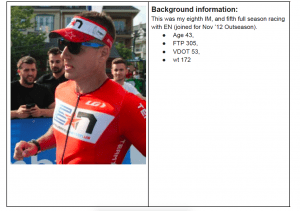

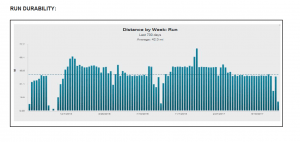
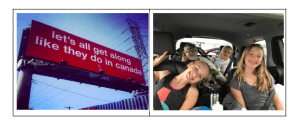
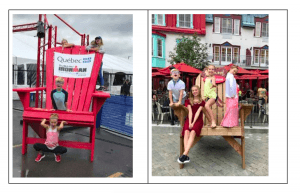
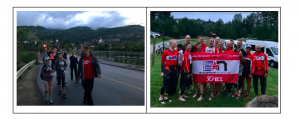
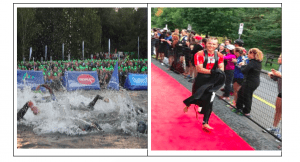


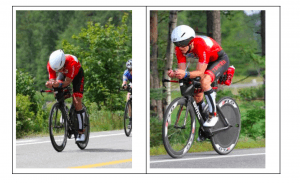


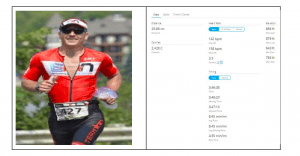
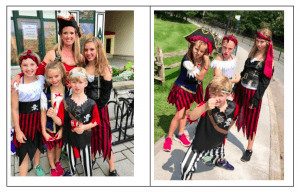

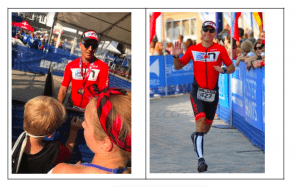


Leave a Reply